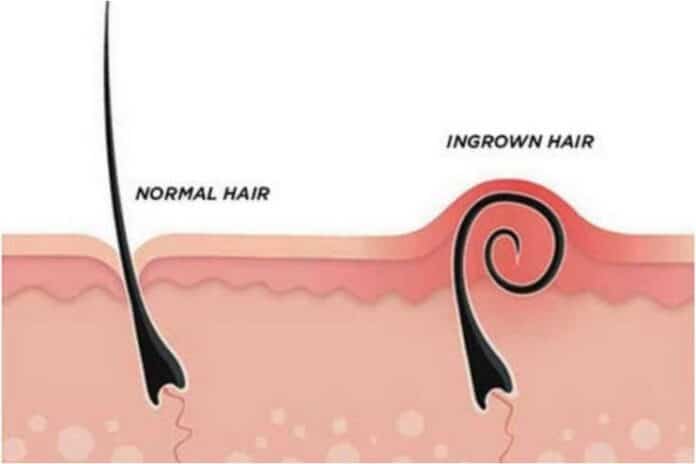Affiliate Disclaimer
Some links in this article are affiliate links. We may earn a small commission if you make a purchase through these links, at no extra cost to you. We only recommend products we find useful to our readersStruggling with ingrown hairs can be both frustrating and uncomfortable. These pesky bumps occur when hair grows back into the skin, causing irritation and sometimes infection.
You don’t need to resort to expensive treatments or harsh chemicals to find relief – there are several effective, natural methods to treat and prevent ingrown hairs.
This article explores simple and practical solutions, including exfoliation techniques, soothing remedies, and preventive measures to keep your skin smooth and healthy. Discover how to manage and eliminate ingrown hairs with these easy-to-follow home remedies.
What is an Ingrown Hair?
Ingrown hair is naturally growing hair that changes the direction of its growth and starts growing inwards. These types of hair tend to grow into the skin instead of out of it, creating an obstruction within the affected area, causing it to develop into a small bump, sometimes even filled with fluid and pus.
Ingrown hair typically heals on its own, but if you want to treat it, stick to home remedies and only consider medication when necessary.
What Does an Ingrown Hair Look Like?
Most of the time, you can’t distinguish an ingrown hair from a pimple. Both appear as small red bumps on the skin and don’t cause noticeable pain unless you touch them. The skin around the area of the ingrown hair tends to itch and cause irritation.
Some signs of ingrown hair include:
- Irritation on the skin
- A pimple-like red bump on the skin
- Lingering pain when pinched
- Boil-like sore with pus inside
- Reddish appearance of the affected area
Why Do You Get Ingrown Hair?
Ingrown hair primarily grows when hair gets trapped or breaks off unevenly. Instead of growing out of the follicle, the hair grows into the skin. There are several other causes of ingrown hair, which include:
- Unevenly broken-off hair during shaving
- Clogged pores from too much oil production
- Lack of exfoliation of the skin
How to Prevent Ingrown Hair?
Ingrown hair often happens in men after shaving and in both men and women after grooming their genitals. To avoid this and stop hair from growing back into the skin, follow these steps:
- Do not put pressure on the face with the razor. If need be, use a trimmer with the lowest settings for a much smoother shave.
- If you have ingrown hair in your pubic region, it is best to stop grooming because this can worsen the condition even further.
So, if you want to remove ingrown hair, follow the home remedies we recommend in the next section.
Home Remedies for Ingrown Hair
You can often treat ingrown hair with natural home remedies that don’t have any lasting side effects. Home remedies might take longer but can create an impactful, long-lasting ingrown hair treatment.
1. Aspirin
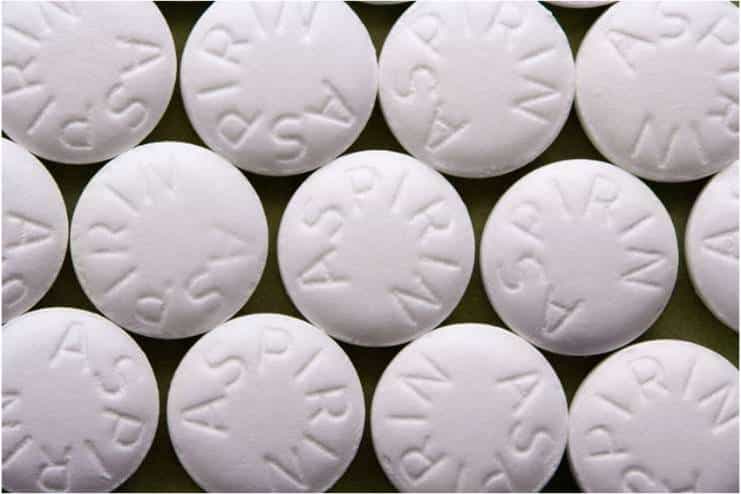
Aspirin is an excellent home remedy for ingrown hair. The salicylic acid in aspirin helps remove the dead skin around the ingrown hair, allowing it to grow outwards instead of into the skin.
How to use aspirin for ingrown hair?
- Grind two aspirin and mix with one or two tablespoons of warm water to make a smooth paste
- Add a few drops of honey to the paste
- Apply it to the ingrown hair
- Leave it on for 10 minutes
- Wash it off with cold water
2. Apple Cider Vinegar
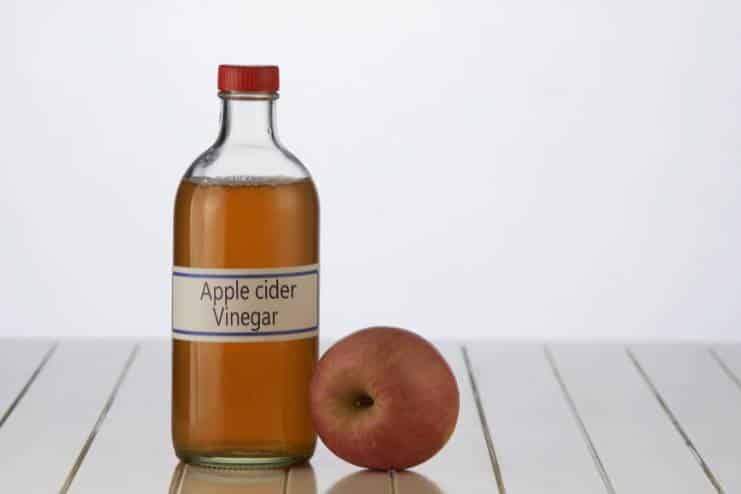
Apple cider vinegar (ACV) is a natural antiseptic (R), which is the primary reason it is beneficial for treating ingrown hair. It is an effective and painless remedy for ingrown hair removal.
Apple cider vinegar’s anti-inflammatory properties help combat the redness (R) and swelling that lingers in the affected area of the ingrown hair.
How to use apple cider vinegar for ingrown hair?
- Mix one tablespoon of apple cider vinegar and one tablespoon of water
- Soak a cotton pad or ball in it
- Apply it to the affected area and leave it on
- Wipe away with a clean cotton pad if required
3. Baking Soda
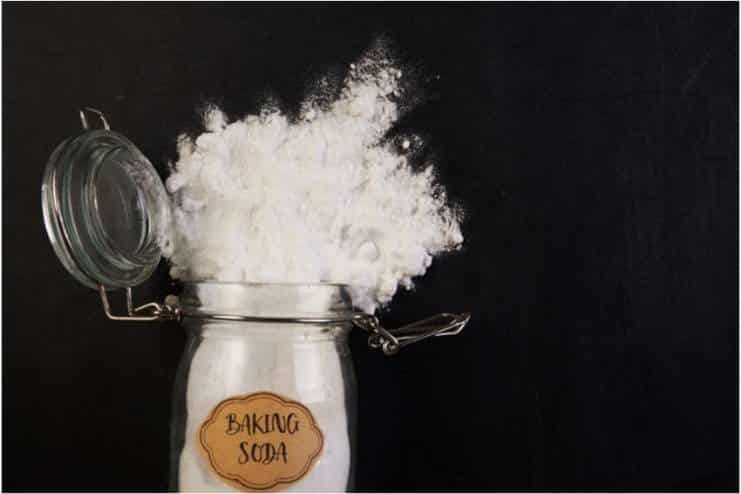
Baking soda has anti-fungal and antimicrobial properties (R), making it a favored remedy. It helps remove the fungal infestation around the pus-filled hair follicle, which can have an adverse effect if left untreated.
How to use baking soda for ingrown hair?
- Mix one tablespoon of baking soda with one or two tablespoons of water and make a smooth paste
- Apply the paste to the affected area and leave it on for 5 minutes
- Wash off the dried baking soda with cool water
- Repeat this twice a day for best results
4. Shea Butter
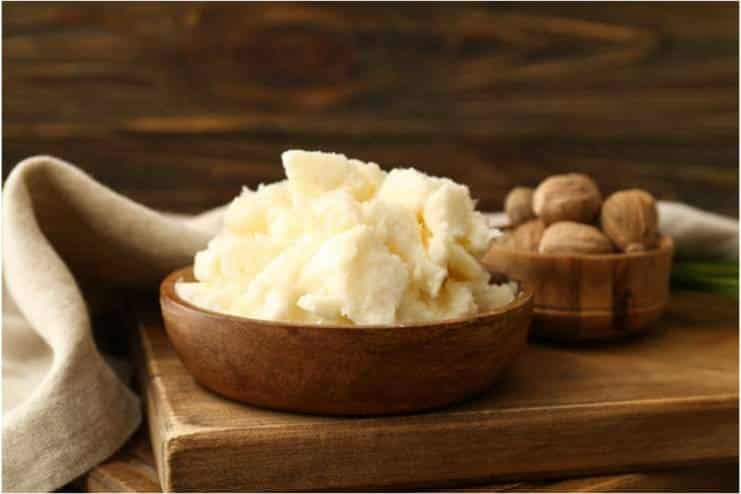
If you have been suffering from ingrown hair and razor bumps and want to reduce the growth of ingrown hair, shea butter is one of the most effective remedies to look into. It softens the the skin around the area and prevents the possible clogging of the hair follicles (R), one of the most frequent reasons for ingrown hair.
How to use shea butter for ingrown hair?
- Apply a thin layer of shea butter and massage it into the skin after shaving.
5. Epsom Salt
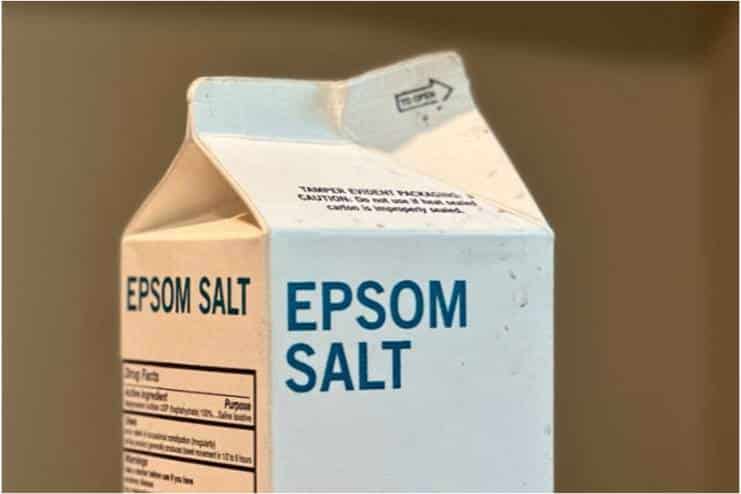
Epsom salt is an excellent natural exfoliator that helps remove dead skin around ingrown hair. It also has mild antimicrobial properties that keep the area clean. If your skin gets irritated or turns red, it’s best to stop using epsom salts.
How to use Epsom salt for ingrown hair?
- Gently rub Epsom salt over the affected area to exfoliate.
- Alternatively, add two tablespoons of Epsom salt to the bathtub and take a warm, relaxing bath.
6. Sugar

Sugar is one of the best exfoliators, so a sugar scrub is one of the best scrubs for ingrown hair treatment. The sugar scrub helps wipe out dead skin in the area that clogs the hair follicle so that the hair can quickly grow without any obstruction.
How to use sugar for ingrown hair?
- Mix two tablespoons of coarse sugar and add two tablespoons of olive oil
- Add ten drops of an essential oil of your choice (optional)
- Mix and apply the paste, rub it on the area of the ingrown hair
- Rinse it off with a damp cloth
7. Toothpaste
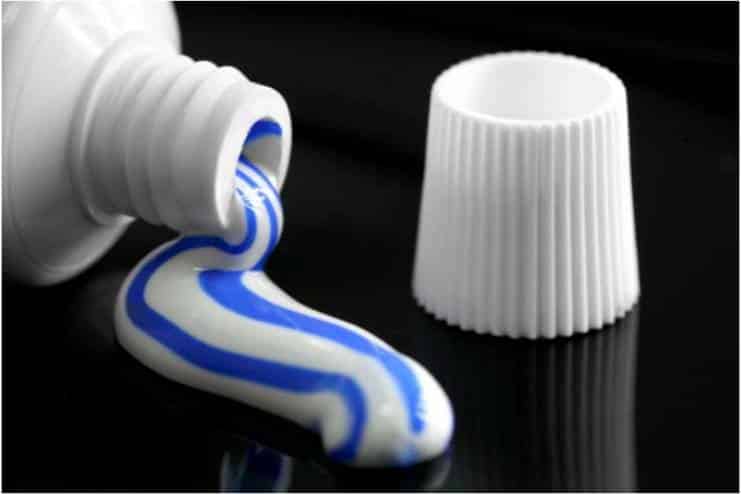
Toothpaste is one of the best remedies for ingrown hair, especially for those whose skin may react to acne treatments. White toothpaste, not the gel kind, works well because it helps dry out the area, making it easier for the hair to come out.
How to use toothpaste for ingrown hair?
- Apply a generous layer of white toothpaste on the area of the ingrown hair
- Leave it on for a few minutes
- Wash it off and repeat the process multiple times throughout the day
8. Black Tea Bags
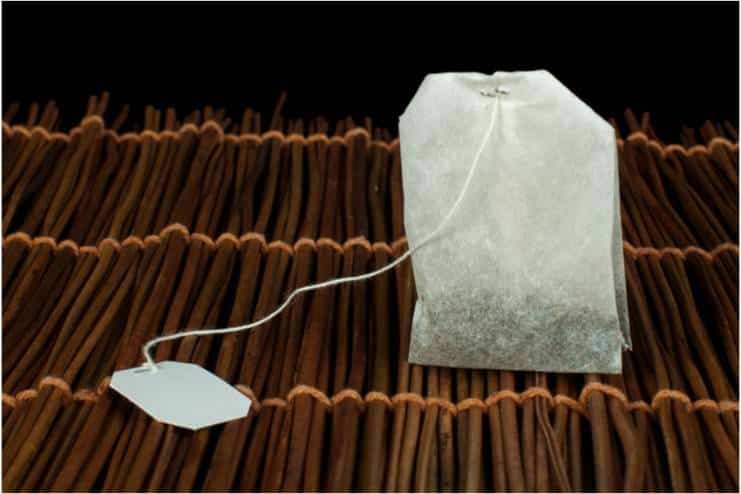
Black tea bags are yet another remedy for ingrown hair. This tea variant is rich in tannic acid, an excellent ingredient for ingrown hair treatment. Tannic acid is known to remove the redness and inflammation often caused by ingrown hair and help soothe the side effects of having ingrown hair.
How to use black tea bags for ingrown hair?
- Soak a black tea bag in warm water and leave it in for one minute
- Rub the moistened tea bag all over the affected area for 3-4 minutes
9. Warm Compress
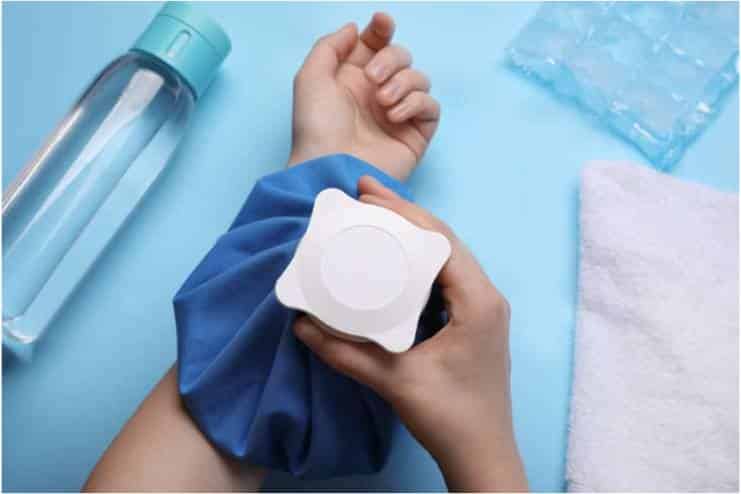
Warm compresses are a fantastic way to eliminate ingrown hair and reduce its growth. They help hydrate the skin around the ingrown hair, making it significantly easier for the hair to come to the surface.
How to use a warm compress for ingrown hair?
- Moisten a compress in warm water
- Apply the warm compress on the affected area and leave it on for 5-7 minutes
- Repeat the process multiple times a day
10. Rubbing Alcohol
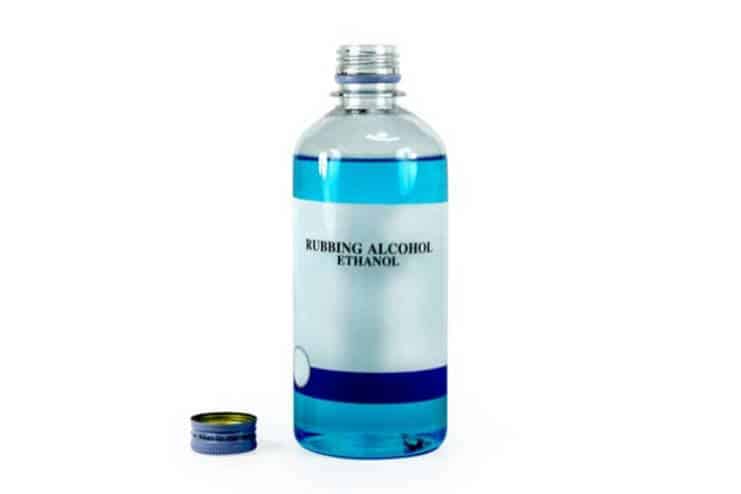
Rubbing alcohol is known for its antiseptic and disinfectant properties. Cleaning the area before treating an ingrown hair can help sanitize it and prevent infection.
How to use rubbing alcohol for ingrown hair?
- Soak a cotton pad or cotton ball with rubbing alcohol.
11. Witch Hazel
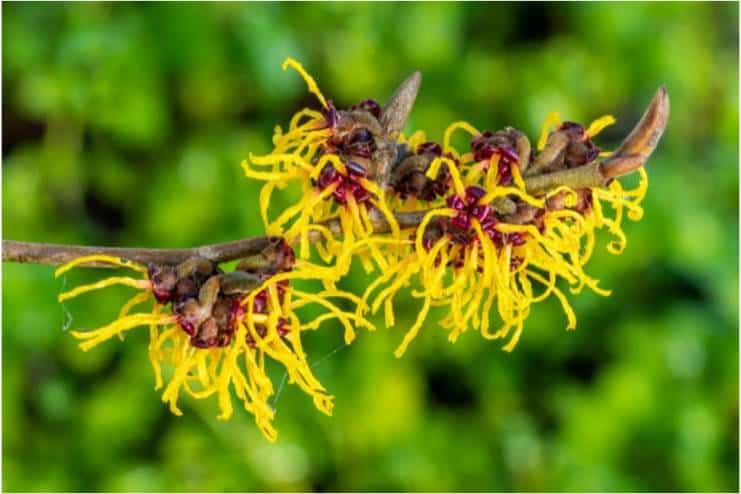
Like any other store-bought toner, witch hazel helps soothe and bring down the redness caused by ingrown hair. Witch hazel is a natural astringent with antiseptic and anti-inflammatory properties.
How to use witch hazel for ingrown hair?
- Soak a cotton pad with witch hazel
- Apply it over the affected area for a few minutes till the irritation calms down
- Repeat this a few times throughout the day
12. Cucumber

Cucumbers are hydrating and have an anti-inflammatory effect on the skin, which is excellent for treating ingrown hair at home. They also help reduce the redness and the possibility of infection. Cucumbers have small amounts of vitamin C, which adds to its benefits.
How to use cucumber for ingrown hair?
- Cut some slices of cucumber and chill them in the refrigerator
- Rub the chilled cucumber over the affected area of the ingrown hair
13. Potato Peels
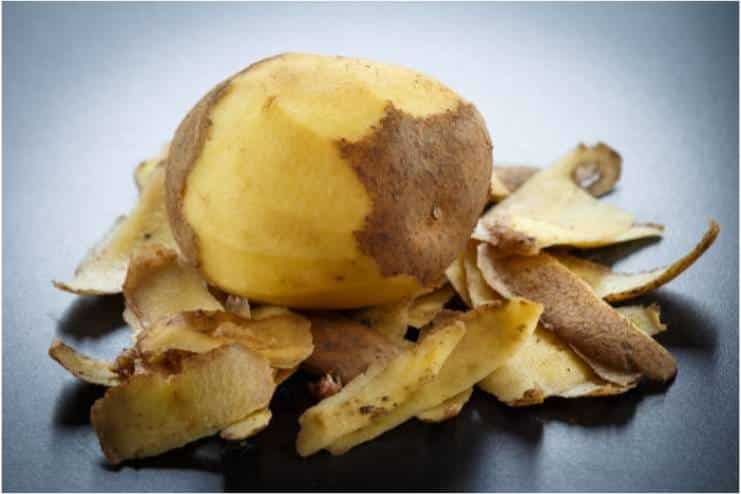
Potato peels are a source of hydration and rejuvenation for the skin (R). They impart anti-inflammatory properties to the skin, which is beneficial in treating and removing ingrown hair. The high starch levels in potatoes also help draw out the ingrown hair to the skin’s surface. They simultaneously nourish and hydrate the skin.
How to use potato peels for ingrown hair?
- Peel a potato and apply the peel on the area of the ingrown hair
- Secure the peel by covering it with a band-aid
- Keep it on for 24 hours
14. Bio-oil, Coconut oil, or Castor oil
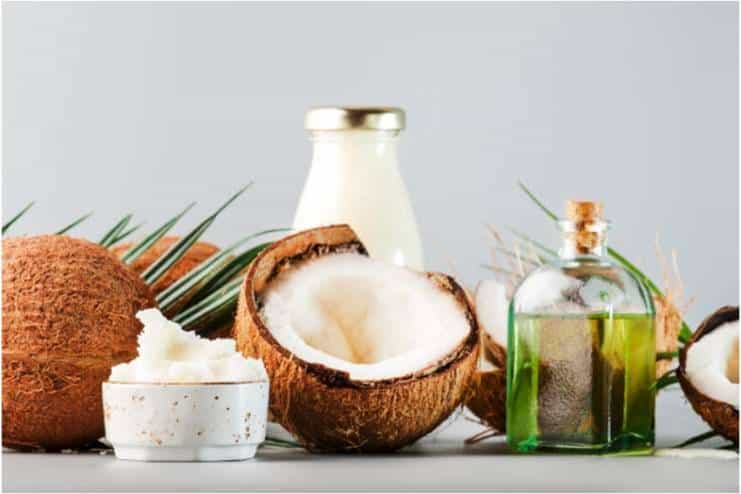
Removing ingrown hair becomes much more complicated when the skin is dry and scratchy. To successfully remove ingrown hair, you must ensure that the skin in and around the affected area is supple and smooth. Bio-oil, Coconut Oil, and Castor Oil help moisturize and nourish the area with their essential oils, which are excellent for treatment.
How to use oils for ingrown hair?
- Dab some bio/coconut/castor oil on a cotton pad or cotton ball
- Apply that all over the area of the ingrown hair
- Repeat this process multiple times throughout the day
15. Pumice Stone
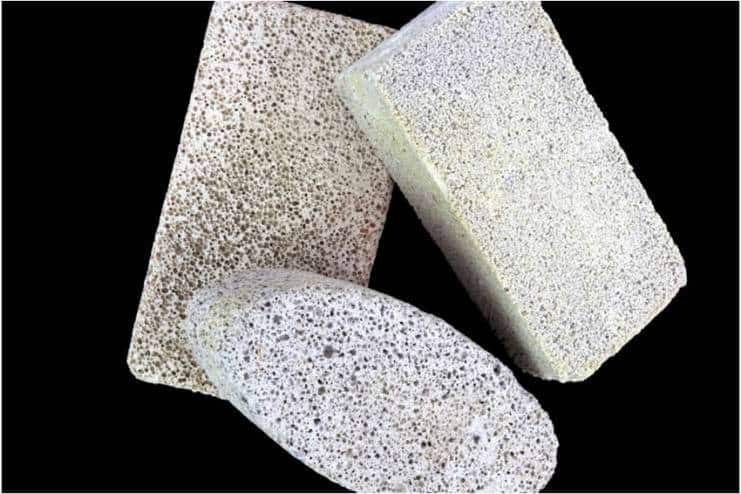
Pumice stone helps exfoliate the dead skin layer in and around the ingrown hair.
How to use pumice stones for ingrown hair?
- Wet a pumice stone under water
- Gently rub the stone across the area of the ingrown hair
- Wash off all the extracted dead skin cells
16. Honey

Honey has multiple benefits for treating ingrown hair. Its antibacterial property helps fight the possibility of infection in the area. It also hydrates and moisturizes the area, which helps ensure that the roughness doesn’t induce more irritation.
How to use honey for ingrown hair?
- Apply a generous amount of honey on the area of the ingrown hair
- Leave it on for 15-20 minutes
- Wash it off with cold water
17. DIY Scrubs for Ingrown Hair
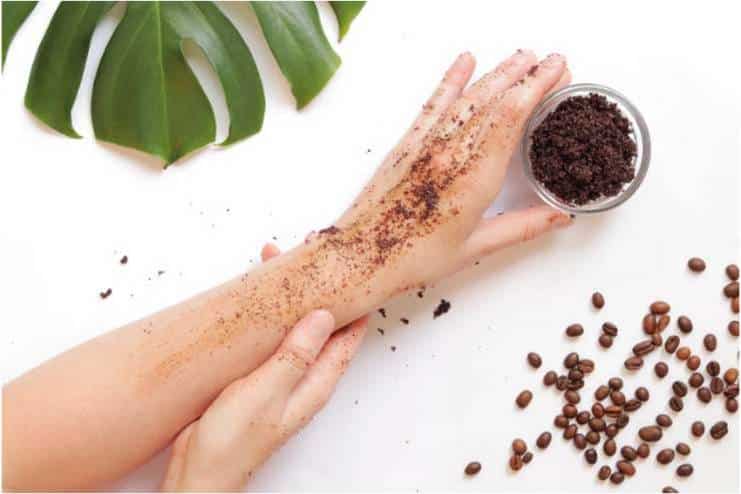
DIY scrubs at home can quickly and effectively cure problems related to ingrown hair and its removal. If you’ve tried many ways to get rid of ingrown hair without success, it’s time to try something new. A good DIY homemade scrub might be just what you need for better results.
a. Salt
Salt is a fantastic exfoliator, which is precisely why it works wonders for ingrown hair. The salt helps remove ingrown hair and improves blood circulation, further promoting the removal process. Do not rub the salt directly to exfoliate because that may cause scarring.
How to use salt scrubs for ingrown hair?
- Mix two tablespoons of salt in half a cup of warm water
- Dissolve the salt and apply it with cotton on the affected area
- Leave it on, and don’t wash it off.
- Repeat this till the ingrown hair comes out.
b. Sugar
Sugar is one of the most versatile ingredients in DIY scrubs. It is a common ingredient in the majority of scrub formulas, and all for the right reasons. It is known for its excellent exfoliating properties, which make it a good remedy for ingrown hair treatment at home.
How to use sugar scrubs for ingrown hair?
- Mix two tablespoons of sugar to one tablespoon of honey
- Mix it till the sugar dissolves halfway through
- Rub the mixture over the affected area for 2-3 minutes
- Don’t press hard. Instead, do it gently
- Wash away with cold water
c. Oatmeal
Oatmeal, owing to its graininess, is a fantastic exfoliator. It helps to get rid of dead skin cells and clogged pores.
How to use oatmeal for ingrown hair?
- Ground half a cup of oatmeal in a blender
- Add two tablespoons of honey to it
- Mix well and form a smooth paste
- Rub it gently over the affected area to get rid of the unwanted dead skin layer
18. Essential Oils

Dry skin is one of the primary habitats for ingrown hair growth. If you plan on plucking it to eliminate the ingrown hair, think again. Plucking can often have adverse effects, which is precisely why you should stick to other remedies that won’t leave behind side effects on the skin.
Essential oils are excellent remedies for ingrown hair removal. They help soothe, moisturize, and sometimes exfoliate the skin. That is precisely why you need to switch it up with essential oils, which have several beneficial effects on treating ingrown hair.
a. Tea Tree Oil
It is one of the most sought-after essential oils because of its health benefits. This specific oil has a high concentration of terpene alcohol, which provides antibacterial properties (R), and is fantastic for treating ingrown hair. For best results, mix 10-15 drops of tea tree oil with a jar of shea butter and apply this mixture throughout the day.
b. Lavender Oil
Lavender Oil is popularly known for its unique smell and soothing properties. It helps alleviate the signs and symptoms of skin inflammation and irritation. Mix a few drops of lavender oil into a jar of coconut oil and beat the mixture until smooth and pasty. Apply it before and after shaving.
c. Doterra Oil
Much like the health benefits of every other essential oil, Doterra oil helps remove ingrown hair without inflicting any side effects. It helps moisturize and hydrate the area of the ingrown hair and prevents further worsening of the situation. Mix it with a creamy oil and apply it over the affected area.
How to Prevent Ingrown Pubic Hair?
Even though the formation of an ingrown hair can be cured by not waxing, shaving, or plucking the hair, these methods are only sometimes practical. Following these methods might help you in preventing ingrown hair.
● Use Uninfected, Single-Bladed Razor
Using razors designed to reduce infection risk can be effective while shaving. If your razor is old, replace it with a new one. Old or infected blades can raise the risk of infections and ingrown hairs.
● Clean the Pubic Area Well
Cleaning the pubic area before shaving can be highly beneficial. You can accomplish this by washing the skin with a mild soap and using lubricating lotions or gels for sensitive skin.
● Opt for a Non-Razor Removal Option
According to experts, it is useful not to choose chemical hair removers as they can irritate sensitive skin. Opting for a permanent hair removal method such as electrolysis can be helpful as it uses an electrode and eliminates all the roots of the hair. Electrolysis, however, also requires a few treatments for weeks and months.
● Laser Hair Removal
Laser hair removal is an excellent method for removing all ingrown hair for an extended period, although this solution may require a more significant investment. Laser therapy removes all the hair by going deeper into the skin. Although laser removal cannot prove effective on light-colored or blond hair, the result of laser therapy is highly effective and semi-permanent.
When to See a Doctor for Ingrown Hair?
Ingrown hair can generally be treated with home remedies. However, if the situation persists after administering home treatments, consult a doctor.
If the infection worsens and does not heal after several days of applying medicine and home remedies, it is time to switch things up and consult a doctor.
Ingrown hair can be a pesky problem that can either heal itself over time or need special assistance (remedies) to heal properly. Maintaining clean and healthy hygiene is necessary to remove and treat ingrown hair. Keep your skin exfoliated, clean, and rejuvenated for healthy and supple skin and as a precaution for ingrown hair.
FAQs
- Does Ingrown Hair Itch?
A: Ingrown hairs can itch and irritate the affected area. If the situation is not treated right at the root, it can later develop into an infection. The reddish appearance and the possibility of infection contribute to the itchiness of the ingrown hair.
- Do You Get Ingrown Hair From Waxing?
A: Ingrown hair is a common complaint of many people after doing waxing. Since this condition occurs when pressure forces the hair back into the skin, waxing can increase the risk of ingrown hair.
- How Long Does An Ingrown Hair Last For?
A: This question doesn’t necessarily have a generalized answer, primarily because the removal and treatment of ingrown hair depend on individuals’ hygiene. It is essential to exfoliate and moisturize the skin daily to keep the possibility of ingrown hair at bay.
- Can You Pop An Ingrown Hair?
A: No, you should avoid popping it like a pimple. Popping an ingrown hair usually doesn’t help and can leave scars. It’s better to use natural remedies to treat it.
- Can You Die From Ingrown Hair?
A: No, you can’t die from an ingrown hair. While untreated ingrown hairs can lead to complications if proper hygiene isn’t maintained, they usually don’t cause serious problems.
-
June 2018Written by Somapika D
-
Sep 2024Edited by Ankita
In this Article

















